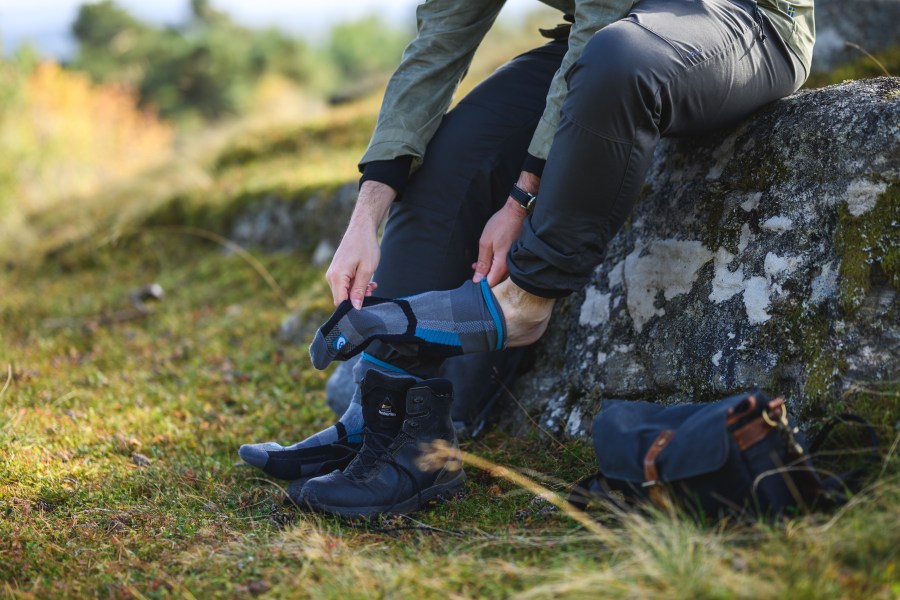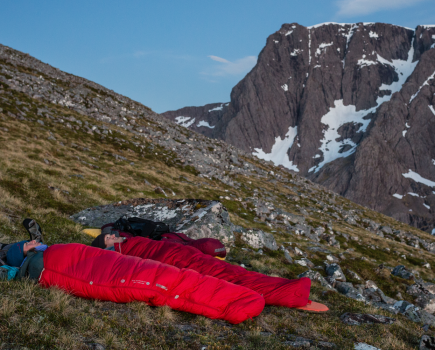Don’t treat your feet as an afterthought next time you’re in the mountains, says Alex Roddie. Here he shares his top tips on foot care for hikers.
What are the two things most likely to put anyone off mountain adventures for life? Fatigue and pain. Especially tired or sore feet. We all know someone who tried out hillwalking or backpacking that one time, maybe as a child, suffered from horrendous blisters, and never set foot on a hill ever again. That’s a huge shame! Anyone can suffer from blisters or other foot problems. It’s worth putting as much effort into understanding foot care for hikers as you might with gear selection or your overall hill fitness.
Main image: Sometimes changing your socks can be enough to prevent blisters | Credit: Alex Roddie
Something I’ve learnt is that keeping feet happy is not necessary a done deal. You don’t learn a secret, crack a code, and then have comfortable blister-free feet for ever more. Although I get far few blisters now than I did 15 years ago, they do occasionally sneak up on me – so it’s always worth tweaking your approach. What worked for you last year may not work this year, especially if you’ve changed your shoes or gained or lost weight.
Footwear
Traditional boots or trail shoes? Waterproof or unlined? There aren’t really any right or wrong answers, so let personal preference be your guide up to a a point – for example, I’d always recommend big boots for winter mountaineering.
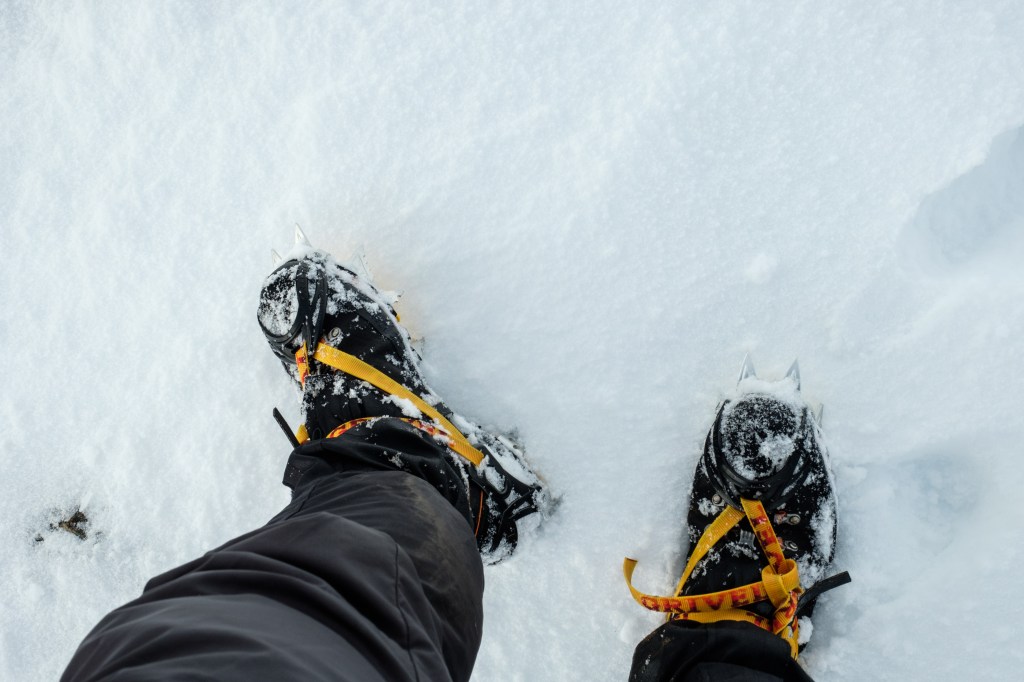
In winter, choose appropriate crampon-compatible boots. Credit: Alex Roddie
Fit is the most important factor. Comfort when trying on footwear can tell you a lot, but it’s better to get your shoes fitted properly at a store with knowledgeable staff. Look for independent gear shops with a good reputation for footwear. Shoes that are too tight will pinch and can restrict circulation (bad news in winter), and will swell even further when wet or frozen. It’s better to have shoes a bit roomy than a bit too tight – but too roomy and your foot will move around too much, causing blisters and maybe even bruising. Fit can be adjusted to a degree using thicker socks or insoles, but there’s no substitute for a good fit.
You may find that softer, lighter footwear is kinder on your feet and less likely to cause blisters. If your feet overheat easily then non-waterproof mesh shoes can offer better ventilation. They also dry out more quickly in wet conditions.
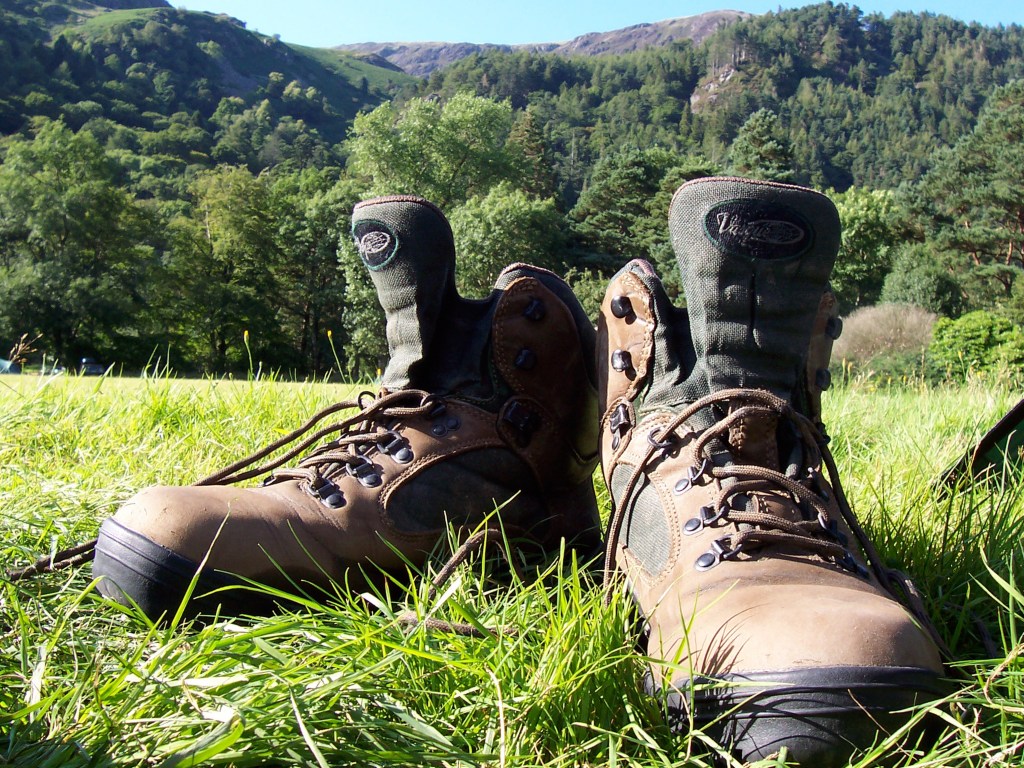
Traditional boots still have their place. Let personal preference be your guide. Credit: Alex Roddie
Shoes can start causing blisters when they begin to wear out. Don’t replace shoes at the first signs of wear, but if they are genuinely past it then replace them.
Socks
Socks are an important factor in good foot care for hikers! I recommend spending money on good socks – or, more specifically, the right socks for you. Synthetic socks tend to be cheaper, more durable, and quicker to dry, while merino wool tends to be naturally stretchy and odour resistant, and some people find it more comfortable next to the skin. A synthetic/merino blend can be the best of both worlds. Never wear cotton socks on the hill.
Look for a good fit – not baggy, but not too tight either – with a good level of cushioning under the heel and forefoot. And choose an appropriate sock for the season. Thin, light socks are great in summer but can result in cold feet in winter. When backpacking, carry a dedicated pair of warm sleeping socks – this can really help your feet to recover overnight.
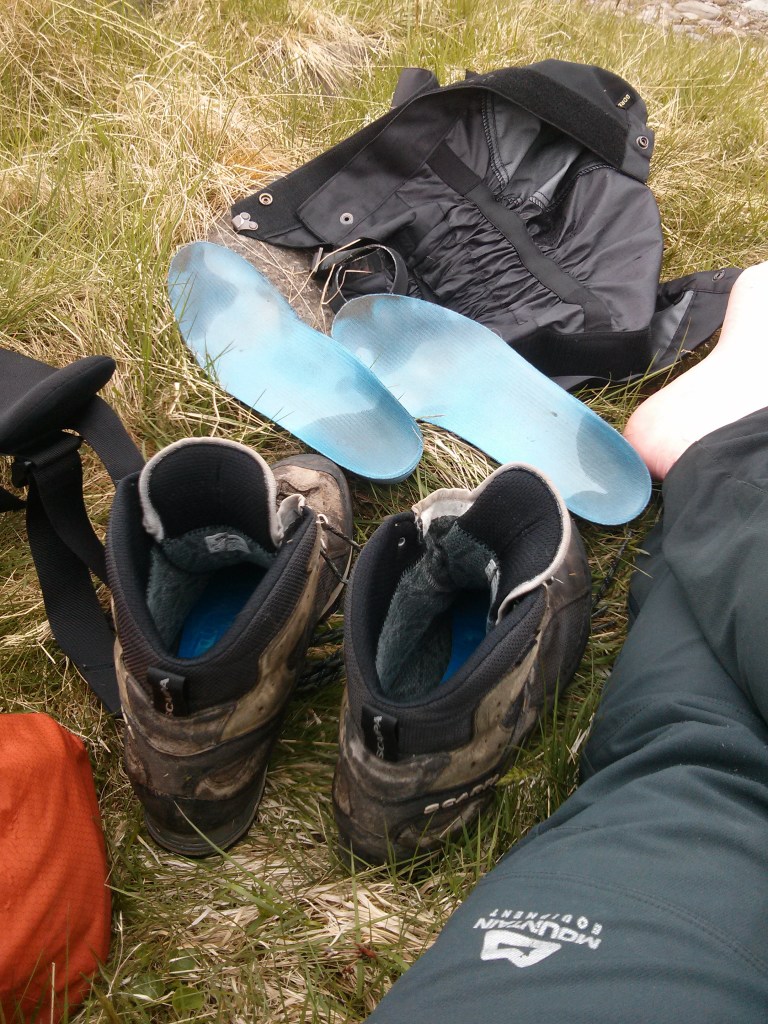
Drying off boots, insoles and socks after a stream crossing. Credit: Alex Roddie
Foot fitness
Fitness isn’t just about your legs and core. A strong foot, and especially ankle, will make a vast difference to your stability and efficiency on rough ground – and will open up the option of using lighter footwear. If you have only used traditional boots before, trail shoes may take some getting used to (especially when carrying a heavy pack). Ease yourself into it gradually on shorter, easier walks.
Similarly, after a summer wearing lightweight shoes, winter boots may feel like a shock! A huge, punishing November trip in B3 boots may result in blisters even if you haven’t suffered from them in months. Part of good foot care for hikers is knowing when to ease yourself – and your feet – back in gently.
Ankle-strengthening exercises you can easily do at home include calf raises and a single-leg stance.
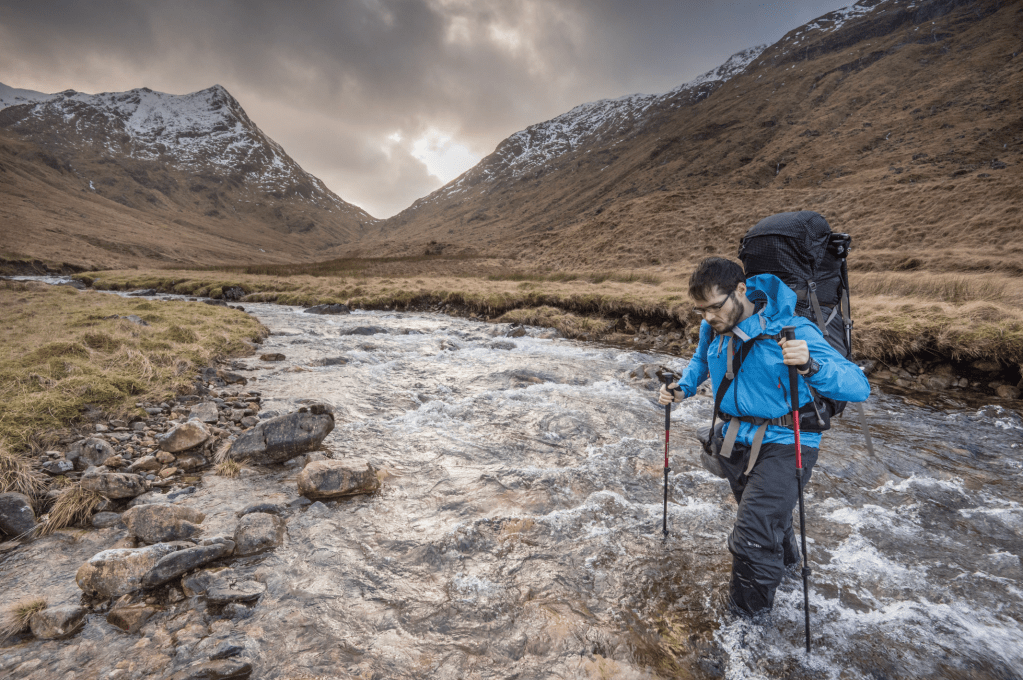
Alex Roddie tackling a Cape Wrath river crossing. Credit: James Roddie
Footcare
There aren’t really any shortcuts to toughening your skin beyond time out there in the hills; seasoned hikers often have areas of calluses on the soles of their feet. This is normal and healthy, and will help prevent blisters – but do carefully remove any loose or flaking dead skin, and seek medical advice if the skin bleeds or become irritated.
Healthy, flexible, well-moisturised skin is more resistant to blisters. Moisturising can help keep skin healthy too. Keep an eye out for signs of fungal infection such as athlete’s foot or ringworm (common amongst hikers), usually with symptoms including sore, itchy skin between the toes or red, scaly skin elsewhere. These can be easily treated with over-the-counter medication.
Finally, keep those toenails trimmed! Long toenails can cause problems ranging from ingrowing toenails to worn-out socks.
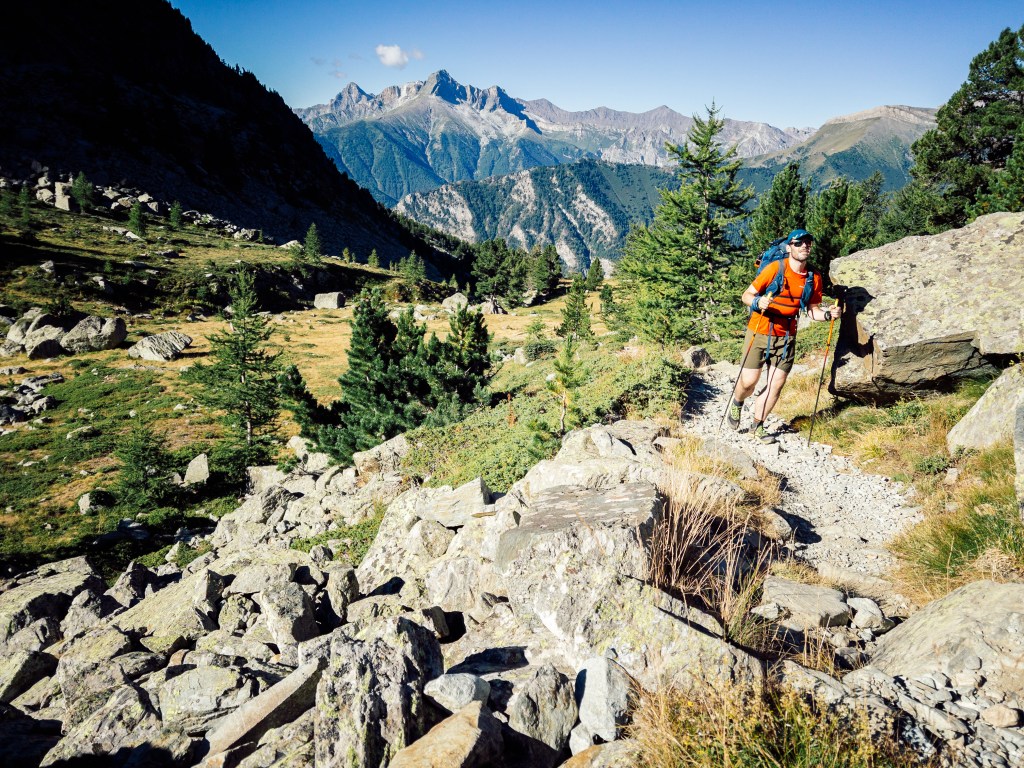
Happy feet = happy trails. Credit: Alex Roddie
Tactics on the trail
Blisters are caused by friction, which is most commonly created by poor footwear/sock fit, moisture, heat, or a combination – a lack of foot care. Make sure that your shoes fit comfortably before heading off to attempt something ambitious, but this isn’t always enough – sometimes blisters appear out of nowhere.
Keep your feet as clean and as dry as possible. Your feet may be wet when hiking, but take the time to dry them at camp, preferably after washing them (downstream from where you collect water). Massaging your feet before bed can help reduce pain and swelling. Never get into your sleeping bag with wet feet.
A hot spot is a sore area that hasn’t formed into a blister yet. You might be able to stop the blister at this stage. Sometimes all that’s needed is to adjust your lacing. Take the shoe and sock off and see if there is any dirt or grit that should be emptied out. Finally, if your feet are damp or wet, try to dry them.
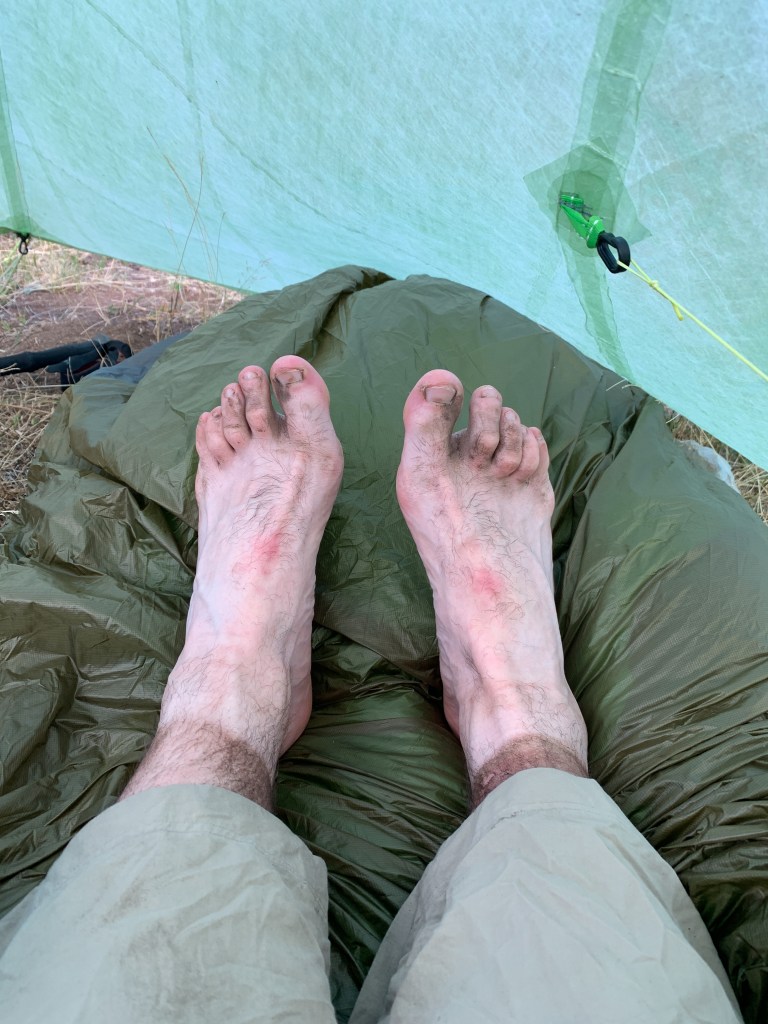
Dirty, grimy feet at the end of a long day in the Pyrenees. Credit: Alex Roddie
Blister plasters will not only help to prevent blisters forming from hot spots, but will cushion and protect any blisters that have formed. Another tactic is to use duct tape or zinc oxide tape (the heavy-duty kind) to strap up blister-prone areas. But duct tape is impermeable – don’t cover your entire foot in it!
If you find a blister, I’ve found that draining it is the best tactic. Carry a needle and thread. Sterilise the needle with a lighter flame or alcohol wipe before using it. Carefully thread through the blister and leave it in place overnight, with at least a centimetre of thread sticking out at either side. Sterilise the area with an alcohol wipe. While this doesn’t always lead to blisters disappearing, it can help them to heal more quickly.
Finally, if a blister becomes infected or deroofed (torn open), don’t just keep hiking for days – this can result in medical complications, and will result in misery. Take a few days off to heal.
Read more: How to stay dry when hiking

